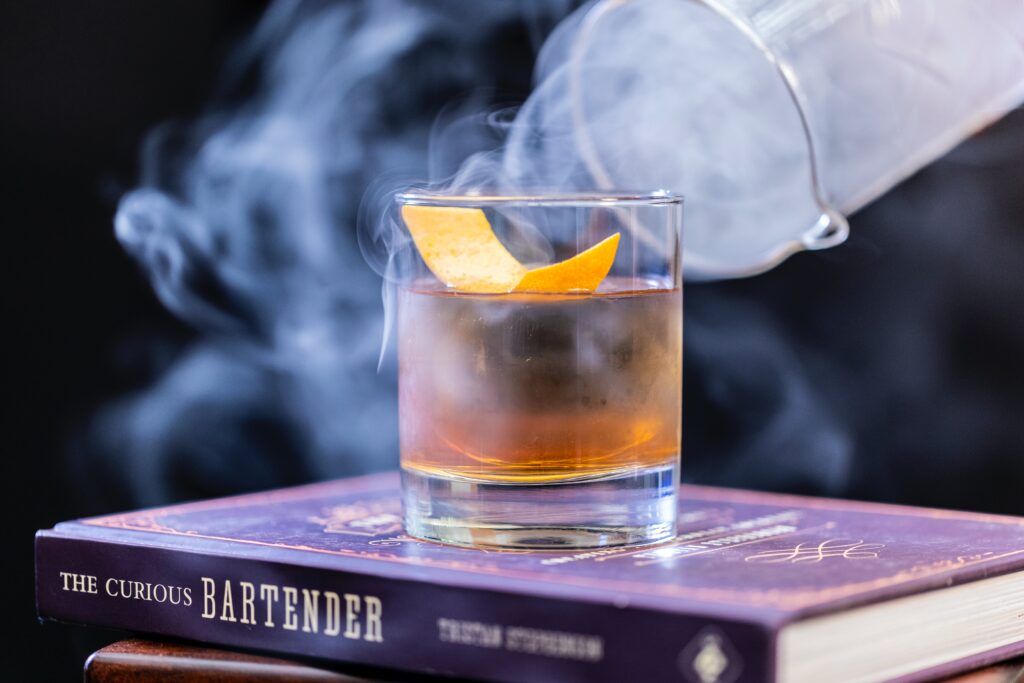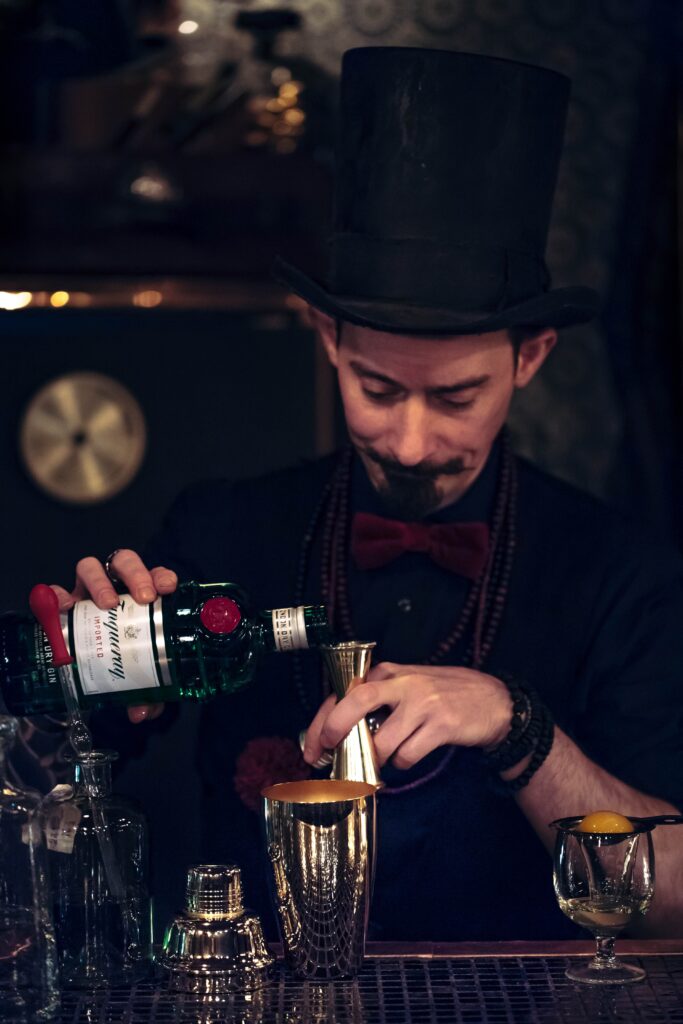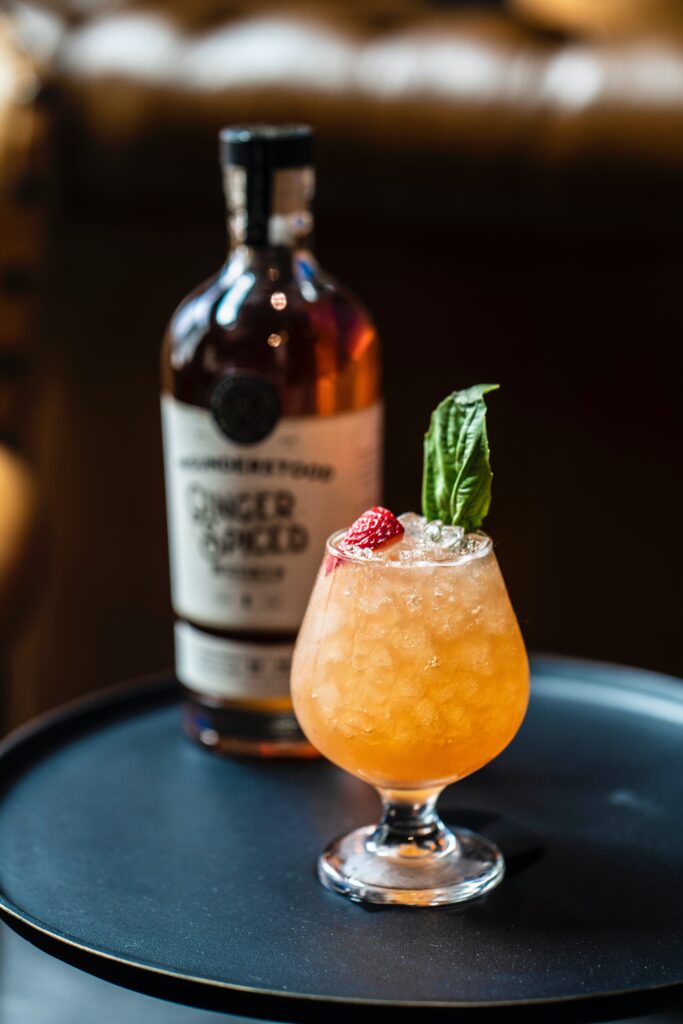
To find the next ‘great’ drink, expert mixologists now use tools and scientific principles. How? By manipulating the very construction of a drink to get the desired texture and taste. This process is known as ‘molecular mixology’. It is taking over the swankiest lounges to the watering hole around the corner. We know that molecular mixology has given, and continues to give us, some amazing drinks. But, what exactly is it?
Molecular mixology uses the same idea of employing scientific tools and principles in preparing something edible. However, as the name suggests, it delves into alcohol and everything around a drink. It requires liquid nitrogen, foams, mists, and even blowtorches. This makes it seem more like an addition to the performance aspect of bartending.However, all of those pieces of equipment ensure that the creator can blow your mind with feels of it. The visual aspect of it is just a cool after-effect.Molecular mixology allows the mixologist to manipulate the taste and feel of a drink. More often than not, molecular mixology is deemed to be a gimmick. However, we promise you it is anything but that. Image Credits: UnsplashAlso Read: 5 Methods Of Making Cocktails
Image Credits: UnsplashAlso Read: 5 Methods Of Making Cocktails
To understand molecular mixology, we need to understand where it comes from first. The root of the idea of using science in the kitchen lies in, well, using science in the kitchen. It’s a part of cooking developed in the late 1980s. The chefs used scientific tools and principles to give their food and beverages the extra oomph they required.It’s no rocket science, but it did open up kitchens around the world to a whole bunch of possibilities. The story of how molecular mixology came to be, albeit short, is just as interesting as the concept itself. This extension of Molecular Gastronomy relies on the same idea of cooking and developing recipes based on scientific principles.However, it wasn’t until the late 2000s and early 2010s that it caught on. Expert bartenders and mixologists wanted to experiment with this technique while coming up with recipes for alcoholic drinks. This led to a revolution in the world of cocktails in the early 2010s.Molecular Mixology has since been adopted by multiple craft establishments around the world. This has got reimagining some of the most legendary cocktails. Not just that, the freedom to innovate and develop has also given rise to some very interesting dishes. For Eg: edible shots, foam recipes, and much more! Image Credits: UnsplashNow we know Molecular Mixology is and where it comes from, let’s take a look at how it works!Also Read: Top Things To Remember When Making Cocktails
Image Credits: UnsplashNow we know Molecular Mixology is and where it comes from, let’s take a look at how it works!Also Read: Top Things To Remember When Making Cocktails
It is also known as the mad scientists creating your next favorite cocktail. Molecular Mixologists use many techniques to come up with unique tastes and textures. Let’s take a look at some of the common methods and techniques used in Molecular Mixology.
This technique comes from molecular gastronomy. It allows mixologists to create small gelatinous spheres from liquids that look a little like fish eggs. The only prerequisite is that the liquid used to create these spheres must not contain any calcium at all.The process requires the base liquid to be mixed with sodium alginate. Then this liquid is added in small amounts to diluted calcium chloride. Once ready, these faux fish eggs need to be washed with clean water. You can find some of these being used in a commonly created molecular cocktails like The Molecular Mojito.
The way this technique is named, you’d think it lets you turn caviar into a drink. However, that is not the case. It’s only called ‘reverse’ spherification because instead of dropping a sodium alginate-infused base into diluted calcium chloride. You drop a calcium lactate-infused base into a bath of alginate.This process allows you to create gelatinous spheres of liquid that look like tablespoon-sized portions of ravioli. One of the most popular drinks made using this technique is the B-52 shot. The Baileys and the Kahlua are turned into raviolis and placed on top of Grand Marnier.Also Read: Flair Bartending: A Complete Guide
Emulsification involves using an emulsifier to bind two liquids that wouldn’t usually mix, like fats. This allows the mixologist to create a smooth and creamy cocktail drink that would never come together otherwise. One of the most popular molecular cocktails created using emulsification is the Cold Buttered Rum.
Suspension is a technique used to thicken and stabilize a liquid. This enables the mixologist to ‘suspend’ the ingredients in the drink as though they are stuck in the air. More often than not, the thickening agent used for this technique is Xanthan Gum. It is a polysaccharide that has subtle and sweet flavor profiles. One of the most commonly created cocktails using suspension is a Suspended Sangria.
The process for Hot Infusion Siphon involves the drinker. It makes them feel like a mad scientist while they are at it! To successfully make a drink using this technique, you will require a table-top infusion apparatus. The lower chamber of this apparatus holds the base spirit, sugar syrup, and water. The upper chamber holds the ingredients to be infused, like lavender or lemongrass.Once heated, the liquid in the lower chamber boils, passing steam through the ingredients to be infused into the alcohol. This allows the steam to carry the flavor back to the lower chamber, giving you a warm and flavorful drink.Also Read: 6 Best Manhattan Variations To Try Right Now
This process allows you to create a gel or jelly-like substance out of your alcohol or your juices. All you need is either agar or gelatin, depending on what liquid you’re trying to jellify. These agents allow you to coagulate your base into a gel. It can be used in a myriad of ways in a cocktail. You can also manipulate ratios to have a fluid gel or a full-on jelly bowl basis how dense you want your jelly to be. Depending on how dense you want your jelly to be, . Image Credits: Unsplash
Image Credits: Unsplash
Do you ever drink a Coca-Cola and think that the carbonated bubbles would be amazing in an Old Fashioned? Well, this technique gives you just that! You will need to add a pre-mixed drink into an air-tight container and charge it with a CO2 capsule. This will give you a properly carbonated drink. The prep for a carbonated cocktail sounds tedious, but we think it's worth it!Also Read: What Is Liqueuer? Everything You Need To KnowSumming UpNow you know all about Molecular Mixology. We highly recommend giving Kahlua Raviolis on a glass of cognac a shot. Lastly, while a lot of the molecular mixology jargon might sounds scientific. This makes a great drink is an art like none other. We definitely think you should let it paint you a picture. Cheers!
What Is Molecular Mixology?Molecular Mixology is a type of mixology that uses equipment and techniques based on science. It uses things like liquid nitrogen, emulsifiers, blowtorches, coagulants, and much more.Is Mixology A Science?Absolutely! Mixology is an in-depth study of the craft of creating and mixing drinks. This is done by studying all ingredients down to their basic chemistry.What Equipment Are Used In Molecular Mixology?Molecular Mixology employs a large number of machines and tools that range from blowtorches to vacuum chambers. You might also find sous vide machines, dehydrators, rotary machines, CO2 chargers, and rotary evaporators being used to create drinks.What Is The History Of Molecular Mixology?Molecular mixology was inspired by molecular gastronomy, which is the usage of scientific techniques in preparing food and beverages. While the gastronomical part came into being in the late 1980s, molecular mixology saw its roots in the early 2000s.What Are The Three Basic Methods Of Mixology?Shaking, stirring, and blending are three cocktail-making basics that one must know.What Is The Method Of Spherification?Spherification is the process of turning any liquid into small, gelatinous balls that look a little like caviar. Generally, this is done by mixing your base with sodium alginate and introducing that to a bath of calcium chloride.What Are Molecular Mixology Techniques?Molecular mixology employs a number of techniques to prepare drinks. A few that are used commonly are suspension, emulsification, and spherification.What Chemicals Are Used In Molecular Mixology?Some of the most commonly used chemicals in molecular mixology are calcium chloride, gum acacia, gelatin, agar, and xanthan gum.